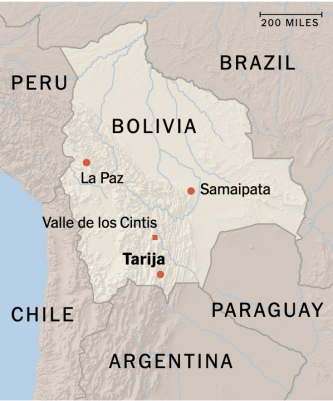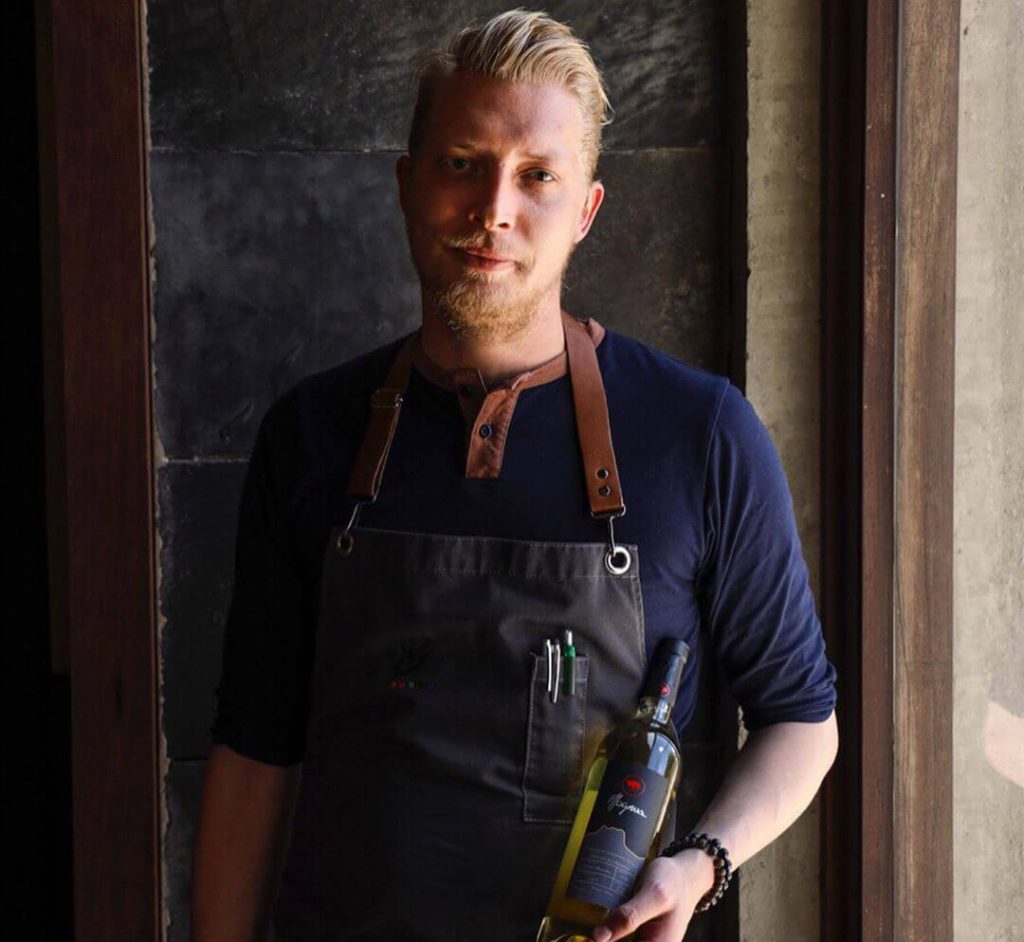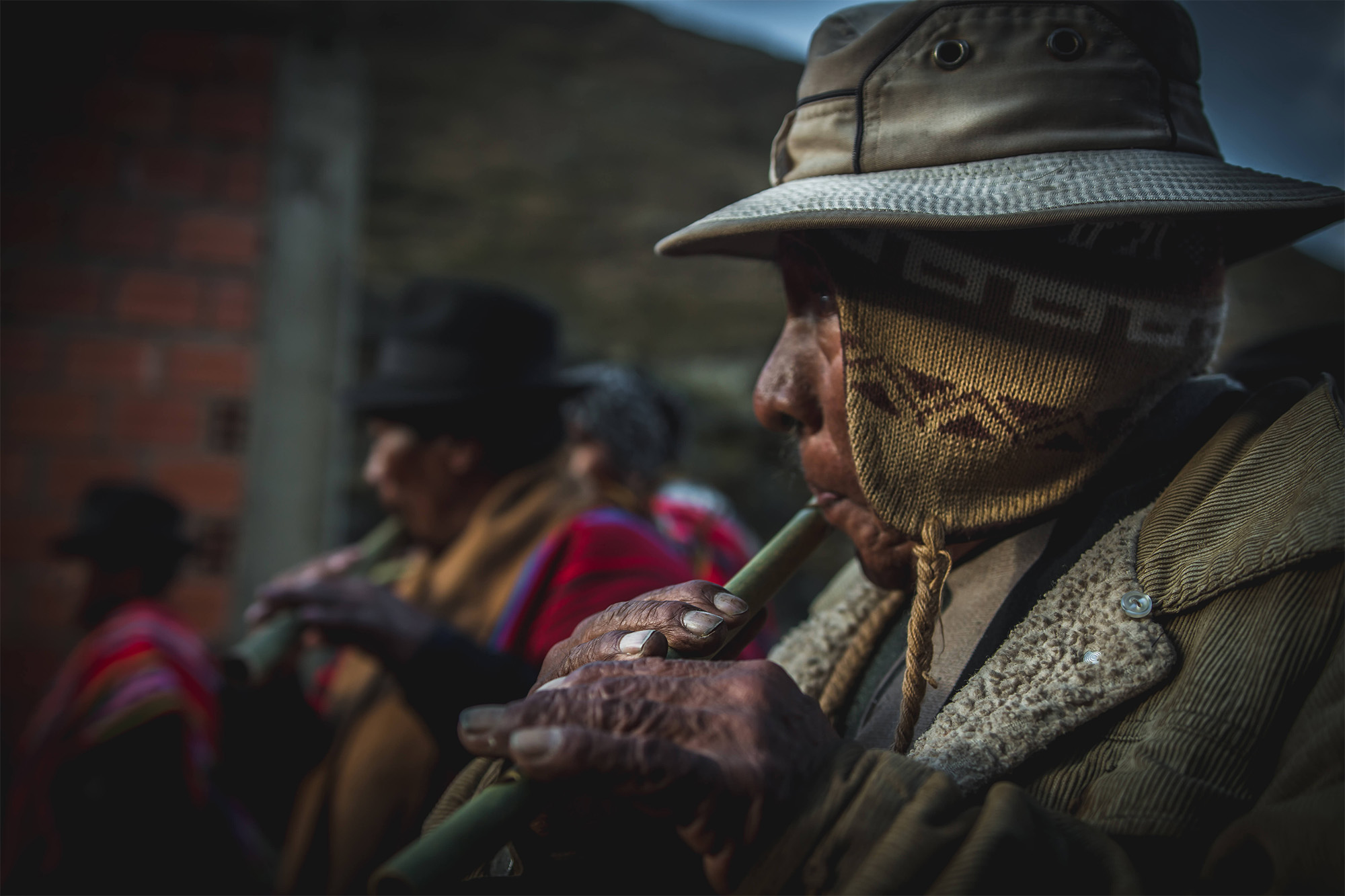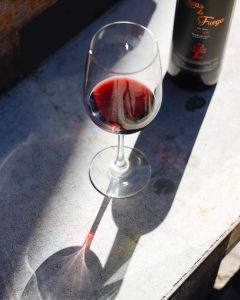Bolivian Wine Class
Bertil Tøttenborg
Phone
completed √
Website
When
Book NowPrice
$0
Overview
VIEW RECORDED CLASS BELOW:
The undiscovered Bolivian wine world, a SommClass by wine and spirits expert and beverage director of Gustu Restaurant, Bertil Tøttenborg.
First, what is Gustu? Its a quechua word for flavour, and a restaurant and bar placed in La Paz, Bolivia, which opened in April 2012. Gustu is under the management of Head Chef Marsia Taha. It is considered among South America's 50 best restaurants, landing the number 32 spot on The Latin America’s 50 Best Restaurants 2014 and the number 14 spot in 2017.
Until very recently I had no idea that Bolivia was a wine-producing country; too close to the equator and therefore surely too hot I assumed! Then, over Easter this year, I had the amazing opportunity to visit its different wine regions – and I was seriously surprised at this little known country’s exciting wines!

Why should we take any interest in far-off Bolivia?
For a start, Bolivia is the only wine region in the world where you can visit a good quality vineyard in the morning and a coffee plantation in the afternoon! The country has 4 wine regions, and its most northerly – Samaipata – is not only on the border of the Amazon rainforest, but also on the very edge of cool climate seasonality. Any further north than this and the climate becomes tropical, with temperatures too warm all year round to grow grapes, whereas coffee beans thrive.
Bolivia has some of the highest altitude vineyards in the world! Her biggest and best wine region, the “Central Valley”, lies in the “foothills” of the Andes around the town of Tarija in the south of the country, at altitudes between 1600 – 2250mts. Only Salta, roughly 300kms south and just across the border into Argentina, has higher vineyards than this anywhere else in the world. These high altitude vineyards are essential at this latitude – Tarija lies just south of the Tropic of Capricorn – because the nights are cool and daytime temperatures rarely rise above 35C. They produce red wines with powerful aromatics and immense fruit concentration, combined with a welcoming freshness.
Bolivian wine has a rich and fascinating history dating back to the early Spanish settlers, who planted vines around the wealthy silver-mining city of Potosi back in the mid 16th Century. The result of this is that Bolivia has some of – if not the – oldest vines in the world which are still used for wine production. The highlight is the San Roque vineyard in the Los Cintis Valley at around 3,000 mts, where magnificent 250 year old Criolla and Moscatel vines grow, intertwined with pepper trees which provide protection against disease and the elements. And there are many more vineyards with old vines over 100 years of age…
Bolivian cuisine is a fascinating mix of Argentinean-style grilled meats mixed with spicy flavours from Asia and Spain. Whilst Peru is a Pescatarian’s paradise, Bolivia is a carnivore’s dream. The big flavours of the food are the perfect companion to the country’s rich, powerful, fruit-packed reds. We tasted many excellent red wines on our visit – many at remarkably fair prices – but it was not clear that there is one single grape variety which will be Bolivia’s star in the future. I much enjoyed Syrah, Malbec, Tannat, Tempranillo and Petit Verdot based reds from different producers and suspect that each of these has excellent potential. Even white wines showed real potential here – my favourite came from the impressive Kohlberg winery from 40 year old Ugni Blanc vines picked in the cool of night, with good freshness, depth of flavour and minerality.
Last but not least, Bolivia has without doubt the warmest, friendliest, most family-orientated wine producers I have had the pleasure to meet anywhere in the world! Their positive attitude combined with an eager-to-learn younger generation of winemakers who have trained in some of the top wine universities of the Americas will surely drive this little-known country to deserved success and recognition on the world wine stage in the near future.

Attend SommClass with Bertil Tøttenborgfrom GUSTU LA PAZ
Bertil Tøttenborg
What's This Class About?
What is Bolivian wine and why is it so different.
Bolivia’s wine culture.
How do Bolivians appreciate wine?
The various types of Bolivian wine style
A Bolivian wine producer’s work motivation and passion.
Indigenous Grape varietals of Bolivia
What you’ll typically find, what works and what doesn’t work in Bolivia’s wine region
Bolivian wine signatures – from classicist to modernist
How far can Bolivia reach as a wine producing country?
Why take this SommClass?
Where is the Bolivian wine region?
Bolivia's wine industry is based in the southern city of Tarija, near the southern border with Argentina. This region has long produced small amounts of artisanal wine, as well as the distilled grape-based spirit known as singani, the national drink. ... Bolivian wine is exotic. We are a high-altitude wine.
HEIGHT OF THE VINEYARDS (METERS)
1,600 to 3,000 100% of the vineyards are at high altitude
HECTARES OF VINEYARDS
3,000 100% harvested by hand
NUMBER OF WINERIES
65 Producing wines of altitude
GRAN PATRONO
The first Marselan wine produced in Bolivia With the name of “GRAN PATRONO” the first Marselan variety wine produced in Bolivia is launched to the national market. The Marselan strain is used for the production of high-end red wines.
WHAT IS GUSTO RESTAURANT ?
One of the worlds 50 best restaurants. Gustu, the quechua word for flavour, is a restaurant and bar placed in La Paz, Bolivia, which opened in April 2012. Gustu is under the management of Head Chef Marsia Taha.
Your host

Bertil Tøttenborg
Born and raised in Copenhagen, Denmark, Bertil Tøttenborg is a certified Sommelier by the Copenhagen Wine Academy. He discovered his passion for food as a child, when he learned to enjoy different ingredients and cooking styles with his family, while helping his parents prepare family meals.
As he grew older, he understood that his true calling was in the service area, especially in relation to wine and beverages, so he focused his studies and work experience working in prestigious Danish restaurants, reaching the position of Head Sommelier.
In 2015, he joined the Gustu family, where he has developed an in-depth knowledge of wines, spirits, crafted beers and coffees, produced in the country, guiding Gustu’s offer towards prioritizing the work of small producers and supporting the production of organic and biodynamic wines.
How to participate
This experience is hosted online.
Once you book, you’ll receive an email with a link and details on how to join.
What to bring
Indispensable
Desktop computer or mobile phone
Stable internet connection
Optional
Bolivian Wines if available
Availability
Things to keep in mind
Communication
Always communicate through our support email (class@sommtable.com)
ID Please
You’ll need need to confirm you're legally over the age of 21 before accessing the classroom
Guest requirements
You’ll need an internet connection and the ability to stream audio and video to participate. A link and details on how to join will be included in your booking confirmation email.
More tips
Please make sure that you have the Zoom app (www.zoom.us) downloaded on your smartphone, computer, or tablet.
Cancellation policy
Any experience can be canceled and fully refunded within 48 hours of purchase





 Share
Share
Sample Comment
03 Aug 2025
Wine and food lovers, and travelers alike have illustrated genuine consumer goodwill by taking to the web to share their best and worst eating experiences. If you´re eager to share your hits and misses, here are some points to write a compelling restaurant review that cannot be ignored.
1) Offer Some Background
2) Give Both Pros & Cons comments
3) Name Specific wines and entrees
4) Evaluate the Entire Experience
5) Let Your Personality Shine Through.